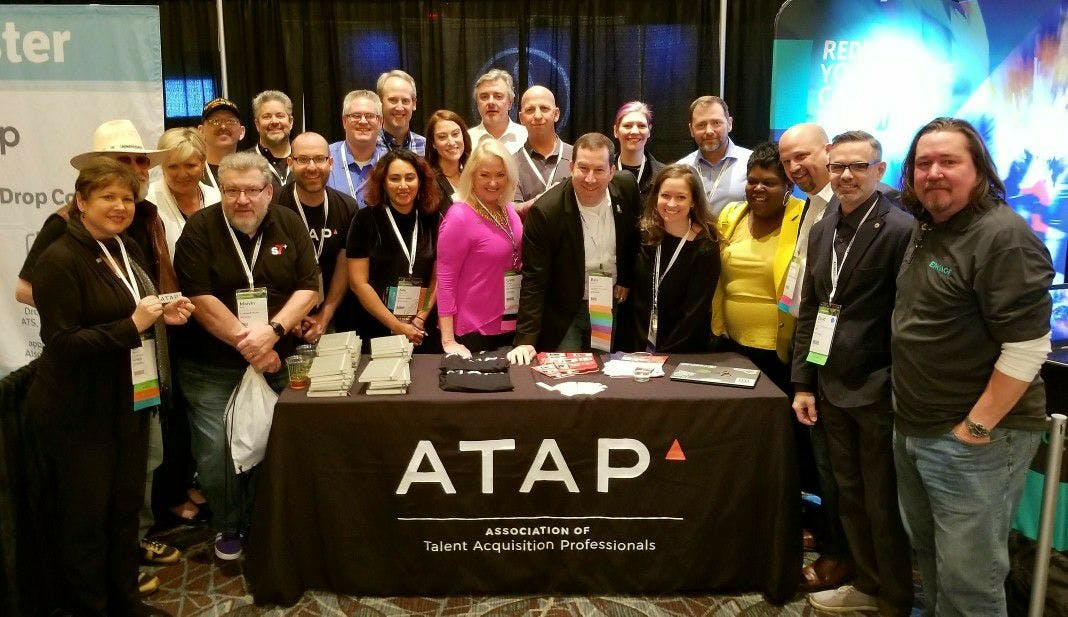At this Spring’s SourceCon event in Las Vegas, the Association of Talent Acquisition Professionals (ATAP), was provided the forum to seek input and feedback on questions core to the Association’s work in developing a Body of Knowledge and Standards around Sourcing Metrics and the Fundamentals of a Sourcing Function. Both committees, comprised of a diverse group of ATAP members, felt that feedback on two questions, in particular, was a fundamental step to provide a solid foundation for their work going forward. The focus of these questions also was on sourcing as a function/activity within organizations, not on who specifically would be conducting sourcing. We presented the questions, and a lively debate followed.
Two of the three questions that we posed to the group of over 40 people in the room were:
- “Sourcing is the identification, assessment, and engagement of candidates through proactive sourcing techniques“ – Agree or Disagree?
- “Sourcing begins at the point where a sourcing need is identified and ends when a Qualified, Interested, Affordable and Available (QIAA) candidate is presented to and accepted by the recruiter or hiring manager“ – Agree or Disagree?
Healthy debate is critical to the process of defining a Body of Knowledge. A wide-range of perspectives and informed opinions is essential to ensure that all voices have been heard and that ultimately there is a high-level of confidence that the end product has been vetted thoroughly. We knew going into this session that a debate was going to happen, but the degree to which there was a difference of opinion on the two questions above was more significant than anticipated. It was healthy, and it was good.
Two key points where we had consensus was on the idea that sourcing begins when the business need is identified, and that research was a key component to the sourcing process.
Where the debate centered was on the question of where sourcing ended, and specifically whether sourcing included candidate engagement. There were several in the room that felt strongly that sourcing ended when a candidate’s resume/CV/profile was identified, visually assessed, and forwarded along to the recruiter. They felt that as soon as there was outreach to the candidate, that at this stage the process transitioned to a ‘recruiting’ activity, and should be treated and measured as such.
Others in the room agreed with the questions as presented, that sourcing ended when a QIAA candidate was submitted to and accepted by the recruiter (or another end user). The argument here was that to determine if a candidate was indeed Qualified, Interested, Affordable and Available, that candidate engagement was necessary.
Variables that seemed to impact the viewpoints above included industry recruiting/sourcing model, high-volume vs. high-touch, and organization size.
So where does that leave us? First and foremost, it was made clear that these questions did not have simple, direct answers. There are multiple factors involved which influenced the viewpoints on these topics significantly. The goal for ATAP will be to consider this feedback and to ultimately build out the body of knowledge and standards on sourcing-related topics that are inclusive of as many of these diverse perspectives as possible.
One thing that we know is that there is no one-size-fits-all approach that can be applied here. Sourcing has multiple components and multiple variables, but there are great benefits to coming to a common understanding of how sourcing should be measured and what fundamentals need to be in place to ensure that a sourcing function can be efficient in any organization. ATAP is exploring this and will be presenting its final work later this year, including a session to roll out a standard set of sourcing measurement standards at the Fall SourceCon event in Atlanta.
In the meantime, what do you think? Where does sourcing end? Does sourcing end with the presentation of a candidate that has or has not been directly contacted? Could a definition of sourcing, and ultimately measurements of sourcing be inclusive enough to accommodate both perspectives? We’re happy to keep the dialogue open as the work of the ATAP committees continue forward.
Special thanks to Body of Knowledge Committee Leader Michael Kannisto, Sourcing Working Committee Leads Nicole Dessain and Brenda Stultz-Roae, and Committee Members Rob McIntosh (for pushing the need for a standard definition of sourcing to work from) and David Olivero (for diligently capturing the feedback in the session). To learn more about ATAP and join its mission to advance the profession, please visit https://atapglobal.org.
